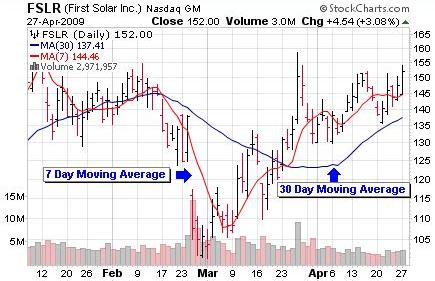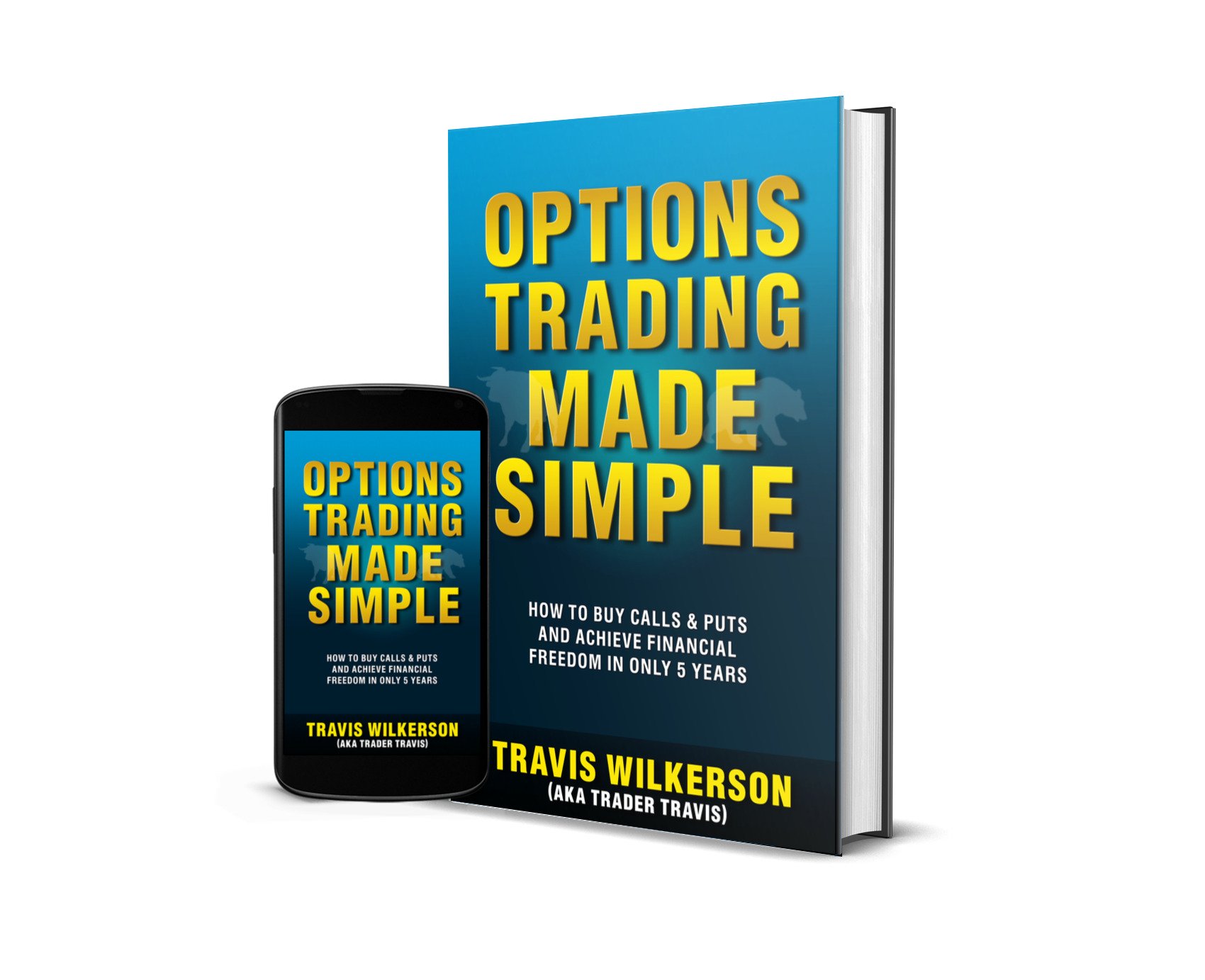Introduction to Moving Averages: this invaluable tool cancels out the day to day noise...
Moving averages serve several purposes in regards to trading.
They can be used to establish trends, for trade entry and exit signals, or used to determine the overall market bias.
For the particular style of stock option trading I'm sharing with you, we will primarily use them to help us determine the trend and for entry and exit signals.
Let's begin by going over the basics.
What are Moving Averages?
A moving average (MA) is a line overlaid on a stock chart that displays the price trend over a certain period of time. You can use any period of time that you like (weeks, days, minutes, etc.).
While it's possible to create moving averages from the Open, the High, and the Low data points, most are created using the closing price.
For instance a 3-day MA is calculated by adding the closing prices for the last 3 days and dividing the total by 3.
15 + 16 + 17 = 48
(48 / 3) = 16
This data point (16) is then plotted on a chart. Tomorrow the very same calculation is performed except the oldest day (15) is dropped and a new day (18) is added.
16 + 17 + 18 = 51
(51 / 3) = 17
The new average will be slightly different because a new closing price has replaced one of the previous 3 closing price points.
This new point is also plotted on the chart. The process is repeated each day for the selected time period. As the average prices are plotted on the chart, they are connected by a line.
The picture below shows an example of a 7 and 30-day MA overlaid on a stock chart.

The shorter the time period (5, 7 day), the closer the average will mimic price movement. The longer the time period (30, 200 day), the longer it takes for the average to "catch up" with the price movement.
All moving averages are called lagging indicators. They lag "behind" price movement; they always happen after the fact.
Notice in the picture how prices are already trending in a certain direction before the average changes direction. This is best seen in the 30-day MA.
3 Types of Moving Averages
- Simple (SMA)
- Exponential (EMA)
- Weighted (WMA)
Simple: A SMA gives equal weight to each price point over the specified period. The SMA is probably the most widely used moving average.
Exponential: An EMA assigns more value or weight to recent prices instead of giving equal weight to all prices as does the SMA. The weighting for each older data point decreases exponentially, giving much more importance to recent observations while still not discarding older observations entirely.
Weighted: The WMA is another moving average that gives more emphasis to the latest data, but the calculations are more involved. A weight is assigned to each data point in the average. Each day is multiplied by its assigning weight and all the weighted prices are added together and then divided by the total number of weights.
The SMA is least reactive to price changes. The WMA is most reactive to price changes, and the EMA is somewhere in the middle.
As you learn more about trading you will find that when prices are trending, moving averages work well. However, when prices are not trending, they are not as useful.
The lesson was meant to be an overview to help you become familiar with moving averages. As we proceed further in the learning tutorials I'll show you how to use them for trading purposes.
The Passive Stock Options Trading Book Series
Discover how to achieve financial freedom in only 5 years...
Read what others have to say about the book. [Amazon affiliate link]
If You're Looking For A Reliable Lower Risk Way To Be
Profitable With Options, Try The "Buffett Strategy"...
I don't know what has brought you to my page. Maybe you are interested in options to help you reduce the risk of your other stock market holdings.
Maybe you are looking for a way to generate a little additional income for retirement. Or maybe you've just heard about options, you're not sure what they are, and you want a simple step-by-step guide to understanding them and getting started with them.
I have no idea if options are even right for you, but I do promise to show you what has worked for me and the exact steps I've taken to use them to earn additional income, protect my investments, and to experience freedom in my life.
If you want to learn more, I invite you to download a FREE video case study on how to trade options like Warren Buffett.
Inside you will discover...
- How investors pay me money to buy their stock.
- How "combining option selling with option buying" resulted in a 60% growth of my account.
- The "Family Freedom Fund" strategy I use to beat the market each year (I'm an experienced investor so your results may vary).
- And lastly, there is a high risk way to trade options and a low risk way. You'll discover a low risk "sleep well at night" method of investing.
Fill in your details below to download your FREE case study. Along with your case study, you'll also get my daily emails where I share my favorite option trading strategies, examples of the trades I'm currently in, and ways to protect your investments in any market.
Wealth Building Resources
Free Video Case Study (Newsletter)
Options Trading Made Simple Book (My Kindle book)
Options Wealth Academy (High End Training Program co-founded by Travis)
Free Options Course Learning Modules
|
Module 1: Option Basics |
Module 2: Option Value |
Module 3: Basic Strategies |
|
Module 4: Stock Charts |
Module 5: Technical Indicators |
Module 6: The 7-step process I use to trade stock options |
Learn Stock Options Trading Home Page
